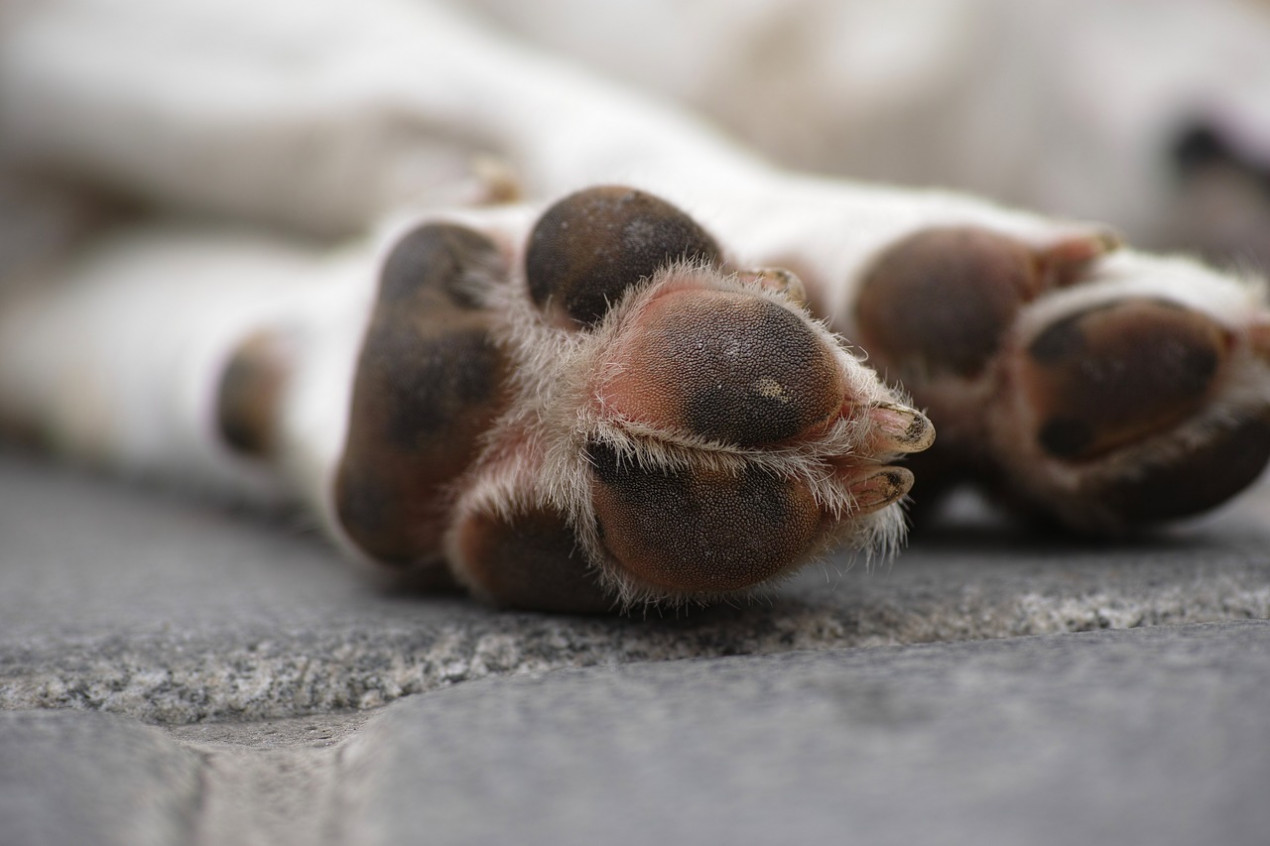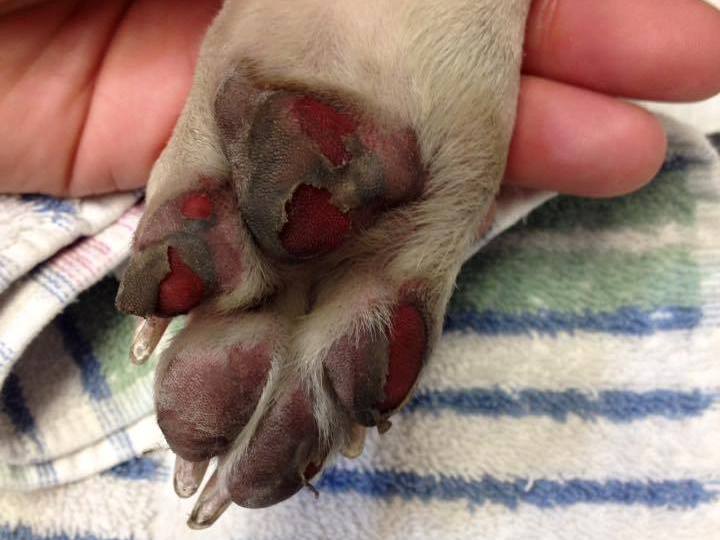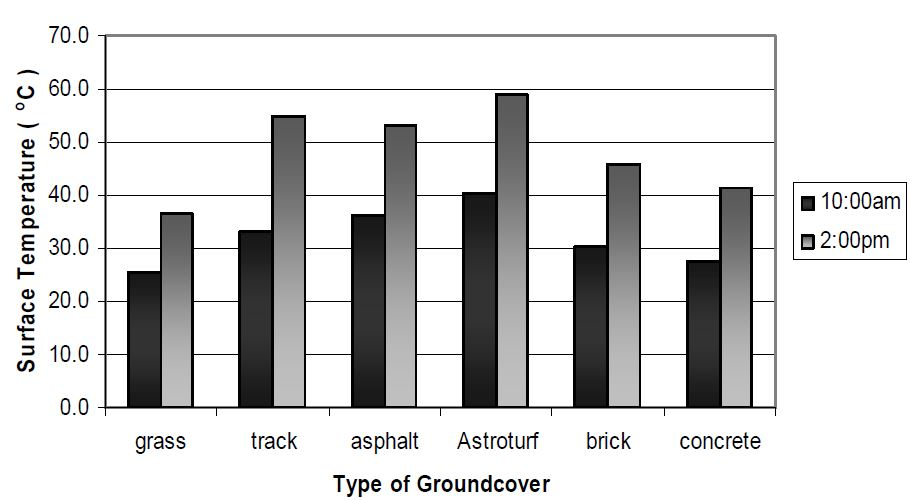
Hot weather can cause roads to melt and dogs to burn their paws on asphalt, tarmac and artificial grass
For many, warm, sunny weather provides a great incentive to get outdoors.
But it also brings its problems – such as roads melting and dogs getting their paws burnt on scorching hot pavements.
Many of our emergency vets have treated dogs who have been the victim of severe burns to their paws.
However, a large number of these cases could have been avoided if owners had followed some simple safety advice.

Follow the seven-second rule and your dog should be safe
Dogs’ paws can be just as sensitive as humans’ feet.
That means they’re equally as likely to get burnt walking on a hot surface as their owner would be.
Vets in the US, where paw burns are common in many areas due to high summer temperatures, came up with a test to check when it’s safe to walk dogs on a pavement.
Their advice is for owners to place the back of their hand on the surface for seven seconds.
If they struggle to hold it down, it’s too hot to walk a dog.
How hot is too hot to walk a dog on a pavement
Dogs can suffer burns to their paws on days most people wouldn’t consider searingly hot.
If the outside temperature is a pleasant 25C (77F), there’s little wind and humidity is low, asphalt and tarmac can reach a staggering 52C (125F).
This can rise to 62C (143F) when the mercury hits 31C (87F).
It’s worth bearing in mind that an egg can fry in five minutes at 55C (131F) while skin destruction can occur in just one minute at 52C (125F).
The reason pavements get so hot is they soak up heat all day and then retain that heat.
Are all surfaces potentially dangerous for dogs on hot days?
Studies have shown that some surfaces retain heat far better than others.
In one university experiment, the temperature of six different surfaces was taken at two points in the day on two separate summer’s days.
The results showed that artificial grass came out hottest in all four trials, followed by the material that’s used to make running tracks and then asphalt.
Asphalt is the most widely used material in roads and pavements throughout the UK while artificial grass is increasingly being used to replace natural grass in parks and gardens.
All three surfaces measured upwards of 50C (122F) at 2pm on both days. This temperature could severely burn a dog’s paws within a matter of minutes.
Brick and concrete came next in the surface temperature league table followed by natural grass. While sand wasn’t included in this experiment, it can get exceedingly hot too.
The fact natural grass was the coolest of the six suggests that owners should choose it to walk their dogs on hot summer’s days (although our strong advice is to exercise dogs before 8am and after 8pm when temperatures are no longer as high).

